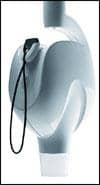A Hands-On Approach
 |
Peter O. Sildve has been the general manager at Wehmer Corp, Lombard, Ill, since 1993. Sildve is also the manufacturing specialist at the company and is involved in the design, development, and production of orthodontic pliers, including sterilization, orthodontic lab, and cephalometric equipment. Sildve has been on the industry side of orthodontics since 1974.
OP: How many different orthodontic pliers does your company offer? Which one is the most popular?
Sildve: We carry a core line of 30 pliers. As a lab products company, our primary focus is on pliers for the lab technician. These specialty pliers account for about 50% of our plier product line. Bird Beaks and Three Prongs in the heavier lab format account for most of our sales, as well as the specialized Hawley Retainer plier.
OP: How popular is the glitter acrylic?
Sildve: Glitter is a popular option for both in-house and commercial laboratories that offer a full palette of colors. Wehmer has tried to put together a sensible product line with economical packaging options that allows even small laboratories to offer the full range of color without having to make serious commitments in inventory.
OP: How many different colors of glitter does your company offer?
Sildve: The current line of Wehmer acrylics includes 32 color options in transparent, opaque, and glow-in-the-dark acrylics, in addition to five different glitter options.
OP: Is digital technology putting an end to the use of conventional study models?
Sildve: Certainly, the evolution of digital models has created wonderful opportunities in the consult phase of orthodontic treatment, and three-dimensional visualization of the patients’ occlusion on a computer screen has provided tremendous opportunities in information-sharing and diagnosis; however, it is still difficult to build a retainer on a digital model. Add the fact that many orthodontists are still “hands-on” clinicians and find it helpful to touch and feel and hold a study model, and the impact on our business of making model trimmers has been relatively insignificant. The hands-on approach of the orthodontist and the particularly mechanical nature of their profession has been a great asset in blending new technology with the timeless techniques that still work.










